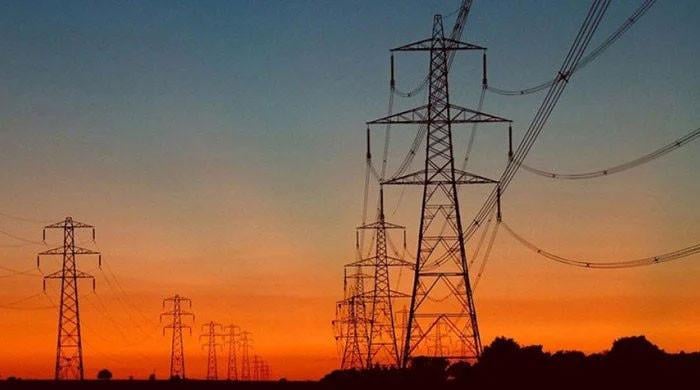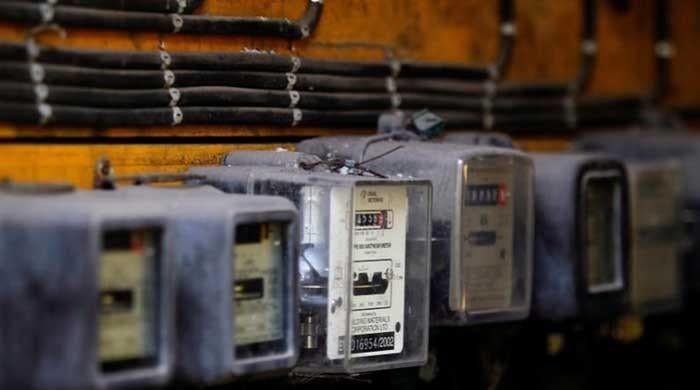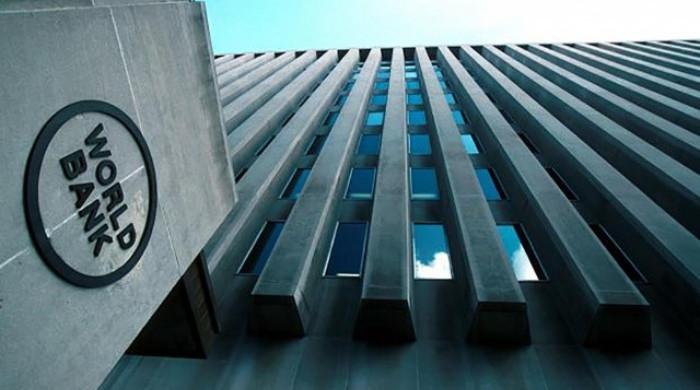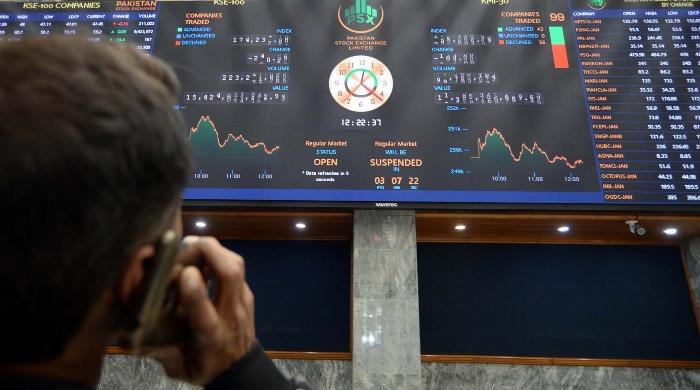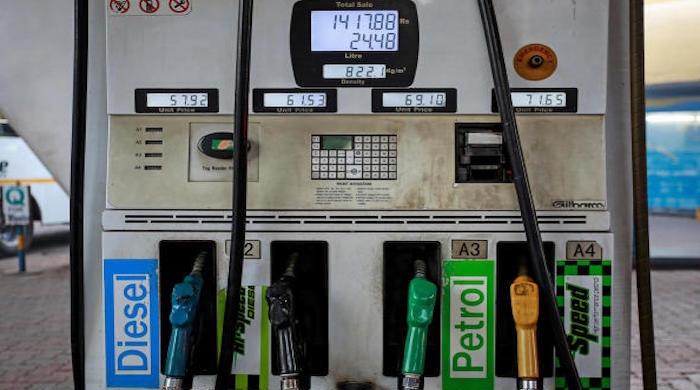Pak economy performs robustly in 1Q, with fiscal deficit at 1.2 percent
Expenditure controls reflected on the prudent fiscal management and government's resolve to maintain this momentum for the remaining year
November 29, 2017
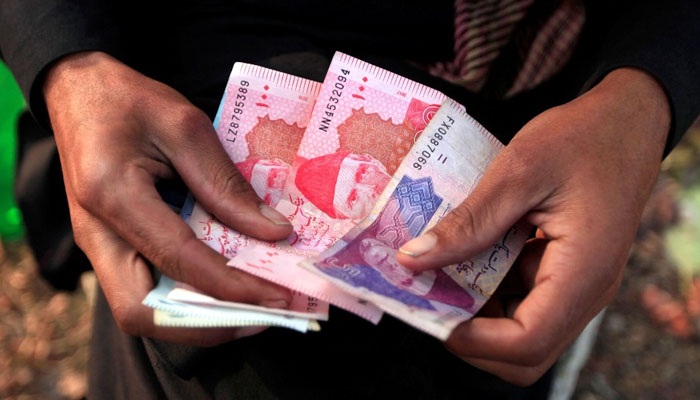
ISLAMABAD: With the fiscal deficit recorded at 1.2 percent of the gross domestic product (GDP), the federal government's financial operations and debt statistics for the first quarter of the current fiscal year (1QFY17) show strong performance and prudent expenditure.
On one hand, the revenue collection — especially that from taxes — registered a strong growth of over 20 percent during 1QFY17, while, on the other, the government's domestic and external borrowings were kept under check, a finance ministry spokesperson said in a statement here Tuesday.
The spokesperson stated that there were expenditure controls as well, which reflected on the prudent fiscal management and government's resolve to maintain this momentum in the remaining quarters of the year.
Based on the actual data, the overall fiscal deficit during 1QFY17 was recorded at 1.2 percent of the GDP as opposed to 1.3 percent during the last year's corresponding period, the spokesperson added.
He said the total consolidated federal and provincial revenue amounted to Rs. 1.025 trillion, which reflects an 18.9-percent increase over same period last year.
The tax collection by Federal Board of Revenue (FBR) amounted to Rs. 765 billion — denoting a hefty growth of over 20 percent — while the non-tax receipts for the period amounted to Rs. 114 billion, which are also higher when compared to the same period, last year.
The total expenditure during the period amounted to Rs. 1.466 trillion, of which the current and development expenditures were Rs. 1.241 trillion and Rs 0.221 trillion, respectively.
The statistical discrepancy for the period July-September 2017 amounted to Rs. 4 billion compared to Rs. 38 billion during last year's same period.
The spokesperson said the civil accounts data of the federal government's revenue receipts and expenditure in 1QFY17 was received from the office of Accountant General Pakistan Revenues (AGPR), financing data from Economic Affairs Division (EAD) — external financing — and from the State Bank of Pakistan (SBP).
Likewise, the civil accounts data of the provincial government's revenue receipts and expenditure in 1QFY17 was received from the provincial Accountant General (AGs).
He added that the deficit figure reported earlier was based on the SBP's daily cash balance reports, which did not include the financing on account of project aid and financing from National Savings Schemes.
The financing from project aid was substantially higher on account of roads and infrastructure, he said.
The spokesperson said around 47 percent of the budget estimates were received as project aid financing during July-September 2017 on that account.
This has mainly been received during September 2017, while incremental receipts on account of National Savings Schemes have recently been reported by the SBP, he added.
The federal government deposits with the SBP, he stated, also reduced during September 2017.
Therefore, after including the aforementioned financing data, the overall fiscal deficit for the July-September 2017 period amounted to 1.2 percent of the GDP against 1.5-1.8 percent of GDP projected by some analysts.
The spokesperson said a section of the media had drawn some premature conclusions on debt performance of the government based on the data for the first two months of the current fiscal year. He clarified that choosing to evaluate debt statistics based on two-month numbers was a flawed method that led to misrepresentation.
He said as debt numbers from relevant agencies — such as Economic Affairs Division, Budget Wing, National Saving and State Bank — were received and consolidated for 1QFY17, it had become quite clear that the upwards bump in public debt was well below the analysts' forecasts.
The debt statistics at the first quarter's end clearly depict that provisional gross public debt rose approximately Rs. 652 billion as opposed to Rs. 1 trillion reported in various media reports, he added.
Similarly, the spokesperson said domestic debt recorded an increase of Rs. 853 billion during first two months of the current fiscal year, while it settled at Rs. 520 billion 1QFY17.
The temporary increase in the domestic debt during the current fiscal year's first two months was due to a time lag between the revenue and expenditures and on account of cash buffers built to comfortably meet the bullet maturities, he added.
The increase recorded in the domestic debt during July-August 2017, the spokesperson commented, was subsequently reversed as the revenue figures picked up and government reduced its cash buffers primarily to retire some of the in-quarter borrowings.
Resultantly domestic debt stock was reduced by Rs. 333 billion during September 2017. He said there was a need to understand that the seasonality in the government's borrowings/deposits may be observed during a short period of time owing to a time lag between the revenue and expenditure streams.
However, it is usually reversed at the end of each quarter.
Specifically, any disconnect between the borrowing and fiscal deficit financing is reversed on an annual or biannual basis — something that is considered to be a normal practice throughout the world.
It is noteworthy that of the gross upward revision in the domestic debt amounting to Rs. 520 billion, the net was worth Rs. 428 billion while the rest went to bolster the government's liquid assets that could be used in the subsequent period towards meeting its financing requirement/contingencies.
Similarly, the spokesperson explained that the external public debt recorded a provisional increase of approximately Rs. 132 billion, which was predominantly driven by translational losses on account of appreciation of international currencies against US dollar and Pakistani rupee's depreciation against the dollar.
Therefore, the incremental mobilization from external sources was almost negligible during the first quarter of the current fiscal year.




